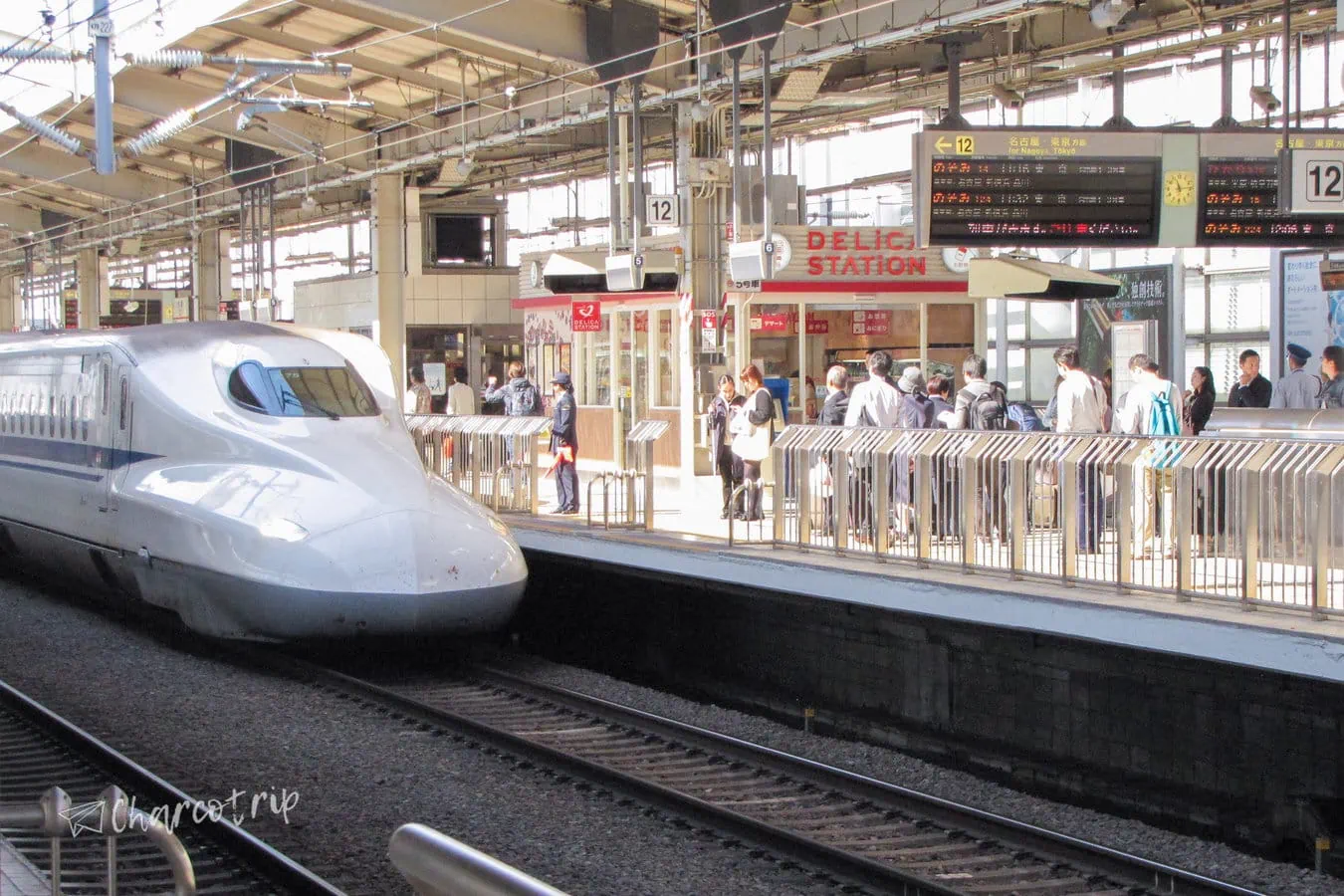Discover how to get there in this guide to visiting the Fushimi Inari Taisha Shrine in Kyoto, Japan. Don’t miss out on this iconic place!
During several of our trips to Japan, we immersed ourselves in the wonder of the Fushimi Inari Taisha shrine, a truly unique place that will leave you speechless! This Shinto shrine located in southern Kyoto, is a destination you can’t miss. Its thousands of vermilion torii gates that stretch along the trails will astonish you from the moment you see them!
Walking among the torii gates and venturing into the sacred forest of Mount Inari, which rises 233 meters above the shrine’s grounds, is a truly captivating experience. Every step you take will immerse you further into the history and spirituality of this sacred place, while you enjoy the breathtaking views surrounding it.
In this article, we will guide you on how to get there, how much it costs to visit, and what you can expect to see on a half-day visit.
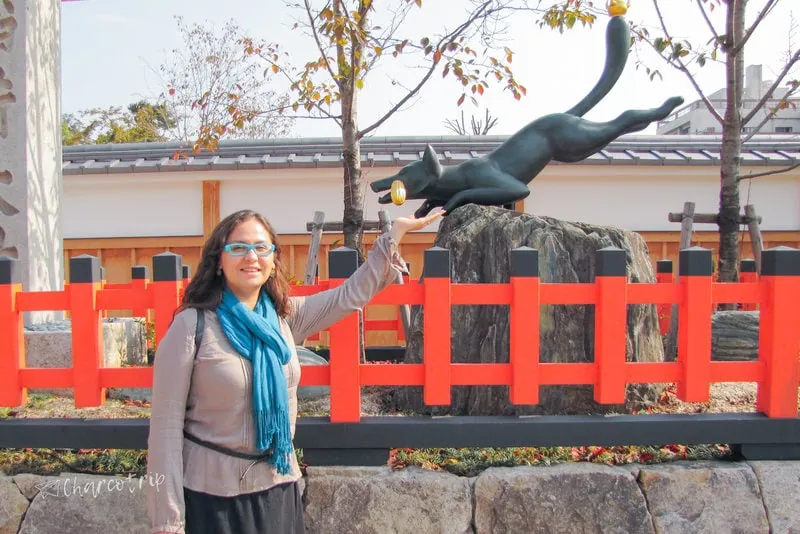
Brief Introduction to the Fushimi Inari Shrine in Kyoto
Foxes are said to be the messengers of the god Inari, which is why you will see many fox statues scattered throughout this Shinto shrine.
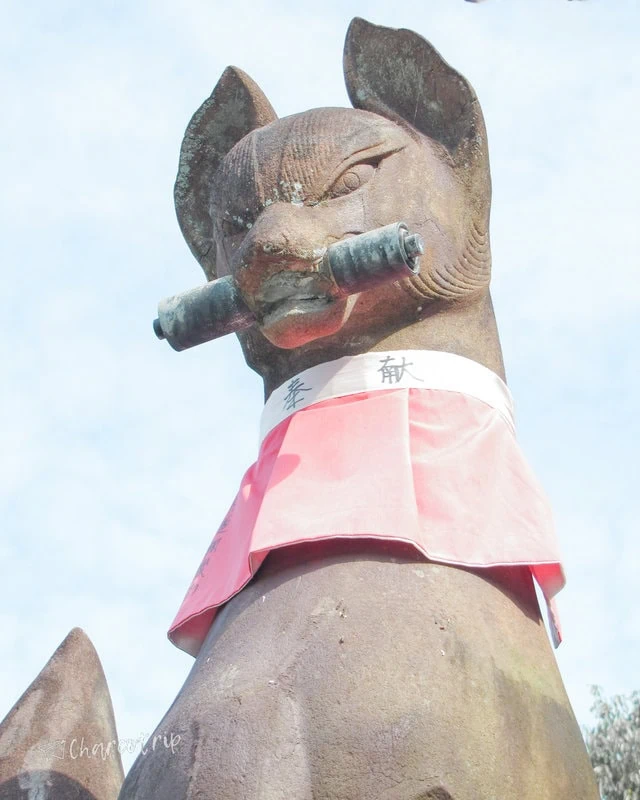
With ancient origins dating back to before the capital moved to Kyoto in 794, the Fushimi Inari Shrine is a place filled with history and tradition. Did you know that the thousands of orange torii gates winding up the hill are donations from individuals, families, and businesses?
The spirit of Inari, the Shinto god of rice, has been associated with prosperity and wealth. It’s no wonder that businesses make offerings in the form of sake barrels or torii gates.
Since its founding in 711, the shrine has been under imperial patronage and has played a significant role in Japanese history.

How much does admission cost?
Best price: FREE

What are the opening hours of the Fushimi Inari Shrine?
It doesn’t have opening hours, meaning it’s open 24 hours a day. But it’s preferable to go when there is daylight.
Please note that the place is staffed between 9 AM and 5 PM.

How to get to Fushimi Inari?
To get to Fushimi Inari, you can take the Keihan main line train and get off at Inari station. Finding the entrance to the place will be no problem, as you can see it in all its splendor when you leave the train station.
Another option is, from Kyoto station, take the JR Nara line to Inari station, this is the second station along this line, and the trip takes about five minutes. As the name of the line suggests, this route will serve you to get to Fushimi Inari from Nara.
For these two options, you can use your JR Pass (Japan Rail Pass).
Are you traveling to Japan?
Don't forget to get your Japan Rail Pass!

What is it like a visit to Fushimi Inari Taisha?
While many foreign visitors come mainly to hike the mountain trails, the shrine buildings themselves are also worth admiring!
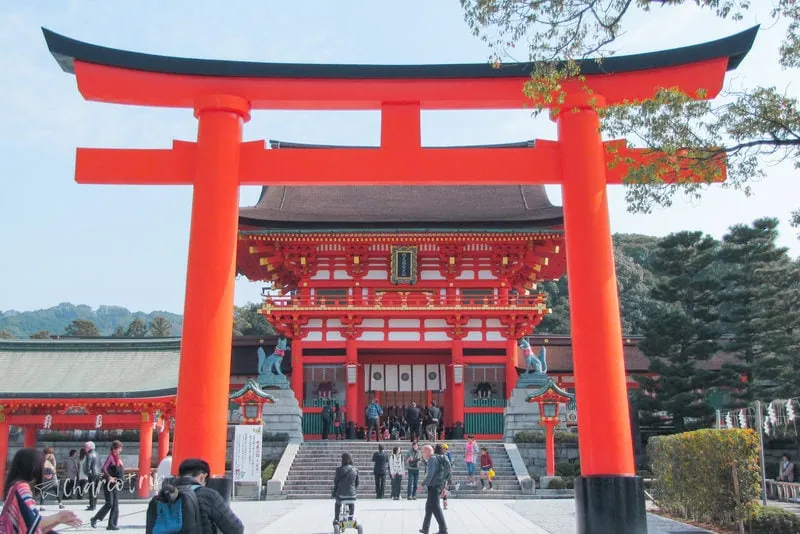
Here are some of the points of interest you will encounter on the 4-kilometer tour of the shrine:
Main Hall (Honden)
Upon entering the shrine, you will be greeted by the majestic Romon Gate, donated in 1589 by the famous leader Toyotomi Hideyoshi. Just behind it is the Main Hall of the shrine (honden), where all visitors are encouraged to show their respect to the resident god by making a small offering.
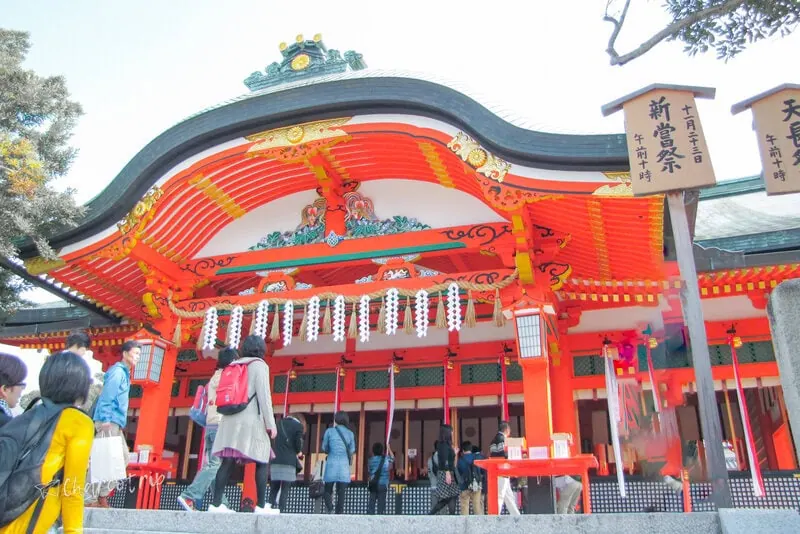
The Thousand Gates (Senbon Torii)
The real adventure begins at the back of the main shrine grounds, where the entrance to the torii gate trail covering the mountain is located. It starts with two dense rows of torii gates called Senbon Torii (“thousands of torii gates”).
Each of these torii gates along the trail has been donated by individuals and businesses. You will find the donor’s name and the date of the donation engraved on the back of each gate.

Donations can range from 400,000 to one million yen. When you go uphill, you won’t see the donor inscriptions, but if you turn back, they’ll be there. I remember that the first time we went, I had no idea it was written there, I thought it was about prayers, but no.
These gates are very photogenic, their popularity grew in 2005 when they appeared in the movie “Memoirs of a Geisha”.
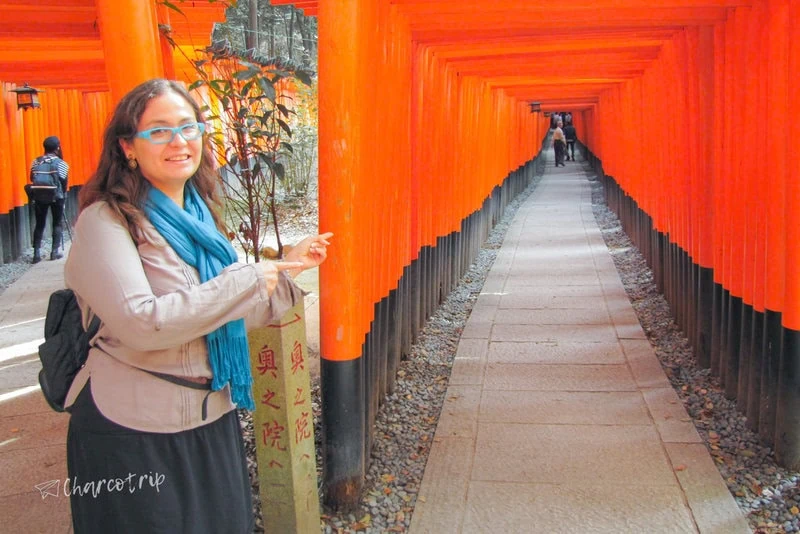
Prayer building (Okusha Hohaisho or Okuno-in)
Commonly known as Okuno-in, the prayer building Okusha Hohaisho is located in the Myobu-dani valley east of the shrine’s main building, at the end of the Senbon Torii (Thousand Torii) gates. People come here to pray to the sacred Mount Inari, whose three peaks can be seen just behind the building.
Omokaruishi stone lanterns
There are a couple of stone lanterns in the back right corner of Okusha Hohaisho. Visitors often make a wish in front of one of the lanterns and lift the top of the lantern. If the stone feels lighter than expected, your wish will come true, and if it feels heavier, it’s unlikely your wish will come true.

Climbing the mountain
The hike to the summit of the mountain and back takes about 2 to 3 hours, but you are free to walk as far as you like before returning.
On one of my first visits, I couldn’t finish the hike due to knee pain. It was a disappointment, but I didn’t give up. I decided to take steps to recover and strengthen my knees. After surgeries and months of rehabilitation, I returned, determined to conquer the trail on one of my birthdays.
Along the way, you will encounter several smaller shrines with stacks of miniature torii gates, donated by visitors with tighter budgets. Additionally, you will see hundreds of fox statues, considered the divine messengers.

Yotsutsuji Intersection
After about 30-45 minutes of ascent and a gradual decrease in torii gate density, you will reach the Yotsutsuji intersection, approximately halfway up the mountain.
Here you can enjoy stunning views over Kyoto, and the trail splits into a circular route to the summit. Many hikers only make it this far, as the trails don’t offer much variation beyond this point, and the density of the torii gates decreases even further!

Sannomine
At this station, Ukanomitama no Okama, the main deity of Fushimi Inari Taisha, is worshipped. This is the most powerful point of the place.
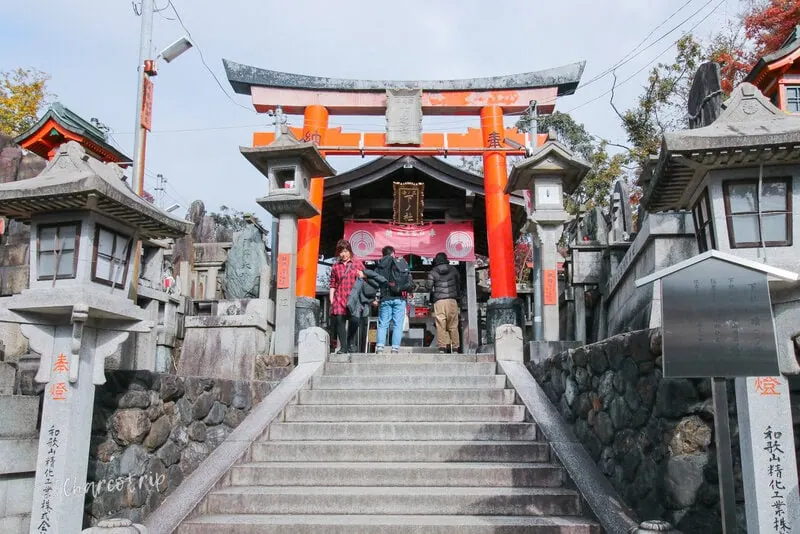
Ichinomine Station
Ichinomine station is the summit of Mount Inari, with a height of 233 meters. It is the place where the deity Suehiro Okami is venerated.
And reaching this summit was one of the most memorable days of my life, I was able to complete the hike at Fushimi Inari. Overcoming that personal challenge and reaching the top of the mountain was an indescribable feeling of “I did it.” I felt full of gratitude for the opportunity to experience the beauty and history of this sacred place, and also for having overcome my own limitations.
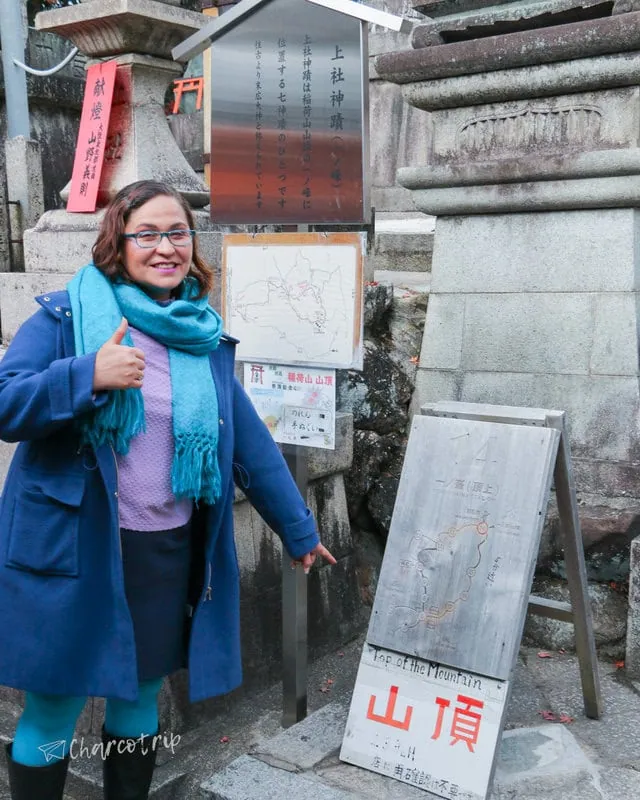
Frequently Asked Questions about Fushimi Inari Taisha
What is Fushimi Inari-Taisha?
Fushimi Inari-Taisha is an important Shinto shrine located in Kyoto, Japan, known for its thousand torii gates that form an impressive mountain trail.
Why is Fushimi Inari-Taisha famous?
Fushimi Inari-Taisha is well-known for its thousands of red torii gates that stretch along the shrine’s trails, creating a unique visual spectacle and a striking spiritual experience.
What is the meaning of the torii gates at Fushimi Inari-Taisha?
In the context of Fushimi Inari-Taisha, the torii gates represent the entrance to a sacred space and mark the transition from the profane world to the divine world in Shinto tradition.
How many torii gates are there in Fushimi Inari-Taisha?
It is estimated that there are thousands of torii gates in Fushimi Inari-Taisha, symbolizing the generosity of donors and the constant flow of requests and desires to the gods.
How long does it take to visit Fushimi Inari?
The time needed to tour the entire Fushimi Inari-Taisha shrine can vary, but on average, a full visit that includes climbing to the top of the mountain can take about 2-3 hours.
Can you climb to the top of Mount Inari?
Yes, it is possible to climb to the top of the mountain at Fushimi Inari-Taisha. The hike can be steep in some sections, but it offers impressive panoramic views of Kyoto and the opportunity to experience a closer connection with nature and the divine.
Conclusion
What an unforgettable experience it was to explore the Fushimi Inari shrine in Kyoto! We walked the trails full of torii gates, immersed ourselves in the history and spirituality of the place, and marveled at the natural beauty surrounding it. But what made this trip even more special was the personal challenge I faced.
In my personal case, the first time we were at the shrine, we only made it halfway up the trail, and due to knee pain, I couldn’t continue and we returned. When we came back later, I managed to reach the top. So don’t be discouraged if you can’t make it all the way to the top.
If you ever find yourself in Kyoto, I encourage you to visit Fushimi Inari and immerse yourself in its unique atmosphere. And don’t forget to check out our comprehensive Japan travel guide for more tips and inspiration for your future adventures.
Some of the links in this article include affiliate links. This means that if you buy a product listed here by following these links, we'll receive a commission. The use of this link does not increase the final price for you and thus helps us to keep our blog alive.



